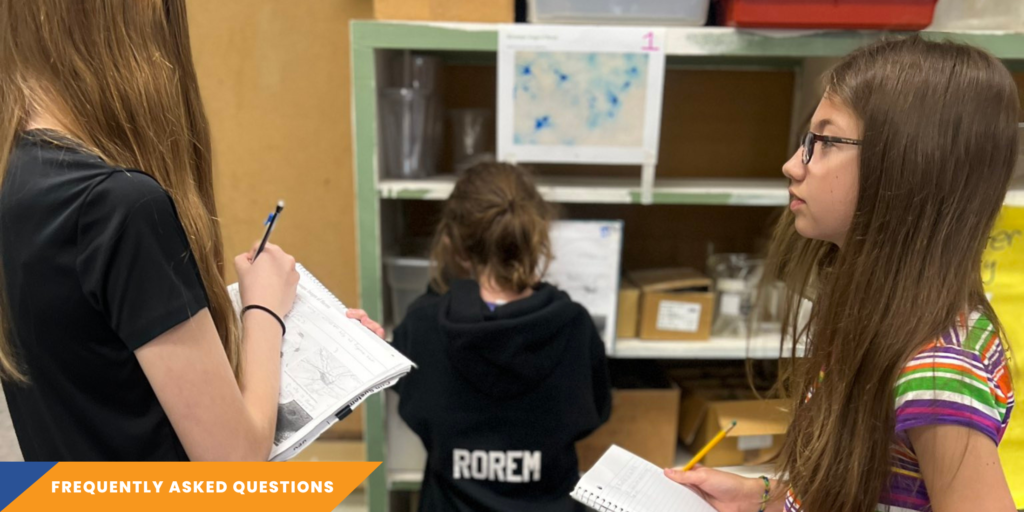Teaching Students to ‘Go Touch Grass’: Why Now is the Time for Nature Journaling in K-12 Education 📓🍃
Teaching Students to ‘Go Touch Grass’: Why Now is the Time for Nature Journaling in K-12 Education 📓🍃
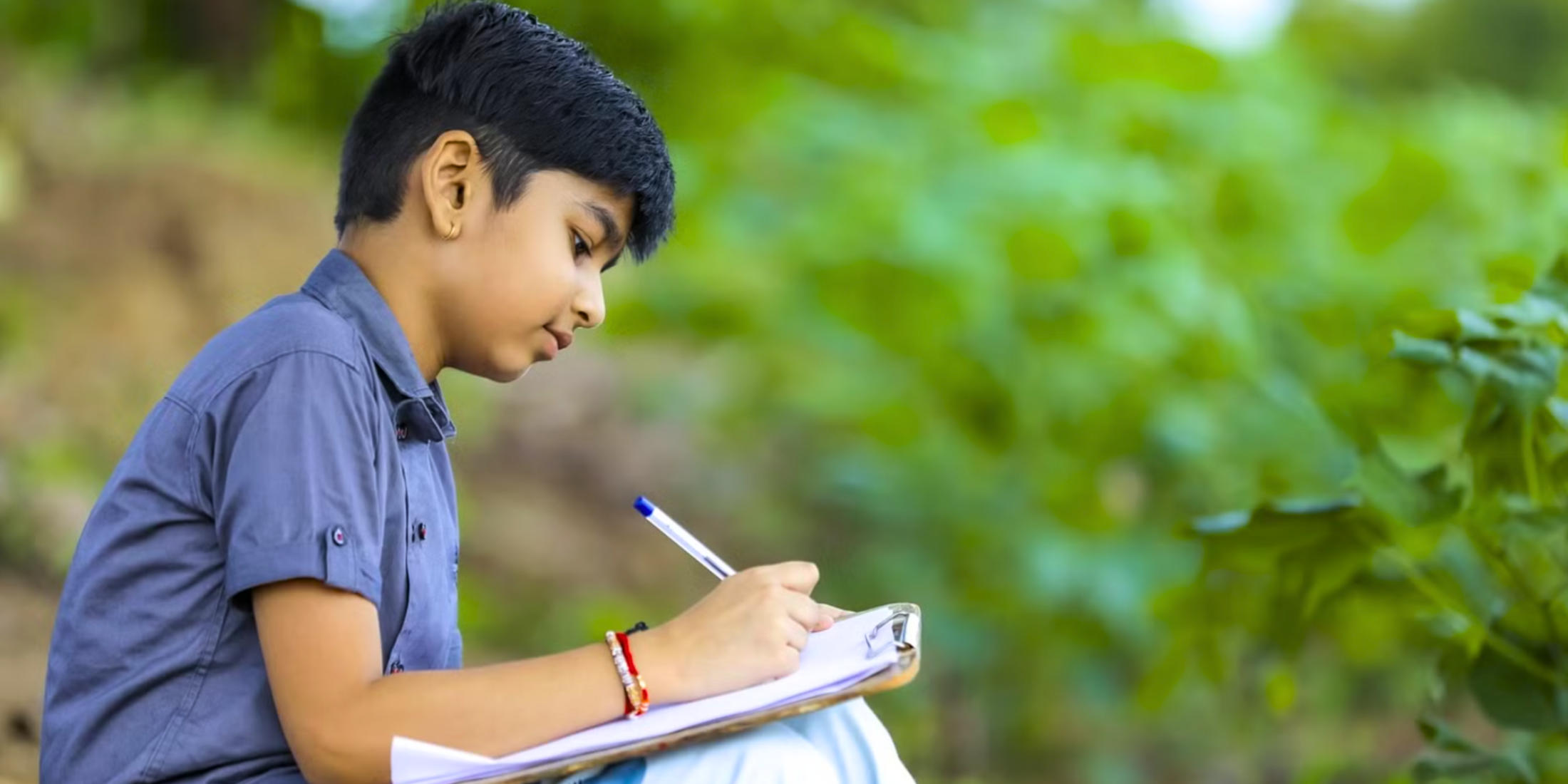
Quick Take: In a world where digital distractions dominate, nature journaling offers a timely and powerful solution for K-12 education. This blog explores why now is the perfect time to integrate nature journaling into your science curriculum. Discover how this simple practice bridges the gap between observation and scientific inquiry, enhances student well-being, and nurtures a strong science identity—especially for diverse learners. With practical tips and resources from experts like John Muir Laws, learn how to bring the benefits of nature journaling into your classroom. Let’s help students reconnect with the world around them—it's time to "go touch grass!" 🌿
Have you ever seen someone online say, 'Go touch grass!'? It's not just Gen Z's witty way of telling you to log off your device and get outside. This cheeky internet phrase has struck a viral chord in our screen-obsessed world, reminding us all—students included—that there's a whole tactile, green world out there beyond our devices that we should explore and experience.
In classrooms across the country, educators are facing a growing challenge: keeping students engaged in a world dominated by digital distractions. Cell phones and personal devices have transformed how students engage with their teachers and learn. But, while using cell phones in classrooms can be a beneficial tool for education, data shows that they are increasingly more of a distraction than a help.
A recent survey by the National Education Association (NEA) (Impact of Social Media and Personal Devices on Mental Health) reveals that 90% of educators in the US now support policies prohibiting cellphone use during instructional time, pointing to the detrimental effects of screen time on students' mental health, interpersonal skills, and academic focus.
Compounding this issue is the fact that, according to new research by Jennifer Bollich in The American Biology Teacher (Nature Journaling in the High School Classroom), many of today’s adolescents have little to no connection to their environments or the native plants and animals that share their spaces. This disconnect is primarily due to a significant decrease in the amount of time children spend outdoors, compared with children in the mid to late 20th century, and a lack of natural history and outdoor experiences in schools.
As student engagement declines and screen overuse concerns grow, schools urgently need alternative strategies to recapture the attention and curiosity of students. In this landscape of competing attention spans and diminishing connection to the physical world, an age-old practice is re-emerging as a powerful educational tool: nature journaling. This simple but profound activity—observing and recording observations about the natural world—offers a compelling solution to several educational issues.
Far from just a simple notebook exercise, nature journaling offers students a powerful way to reconnect with the world around them. By encouraging them to step away from their screens and engage with their environment creatively and scientifically, nature journaling provides a much-needed antidote to the distractions of modern technology, addresses the pressing need for increased student engagement, and builds soft skills that are in demand in the STEM-driven workforce.
In this post, we'll explore the benefits of integrating nature journaling into the student learning experience. While our focus here is on science education, it's worth noting that nature journaling is a versatile tool that can enrich student learning across all grade levels and subject areas, from elementary art classes to high school literature courses.
Bridging Observation and Inquiry: Nature Journaling as a Catalyst for Scientific Thinking

“Nature offers us peace, a rich and meaningful place to learn. There is no computer program that can replicate the richness of seeing a flower up close, the intrigue of geeking out with bugs, or the calm of laying on your back and watching clouds.” – John Muir Laws
At its core, science is about observing the world around us and asking questions about what we see. Nature journaling provides a structured yet creative approach to this fundamental scientific process, seamlessly connecting observation of phenomena to inquiry. This practice aligns perfectly with the "Notice and Wonder" strategy, a foundational approach in Activate Learning's K-12 science curricula.
John Muir Laws, science teacher, founder of Wild Wonder Foundation, and a leading figure in the nature journaling movement for over 40 years, exemplifies how educators can effectively introduce nature journaling to students. He developed a straightforward, yet robust framework based on the ‘Notice and Wonder’ strategy aligned with the Next Generation Science Standards (NGSS). Laws’ “Notice, Wonder, It Reminds Me Of” methodology deepens students’ engagement with the natural world.
The process starts by encouraging students to observe details in their surroundings—such as the shape of a leaf, the pattern of a bird’s feathers, or the texture of a rock. These observations are then recorded in a journal through writing and drawings, forming the basis for further inquiry.
As students move from noticing to wondering, they begin to ask questions about what they’ve observed. Why does this plant have such deep grooves in its leaves? What causes the variations in color on this insect's wings? When students notice patterns in nature and begin to ask questions about these patterns, they are engaging with the NGSS crosscutting concepts of patterns and cause and effect. As they explore these questions through journaling, they practice essential scientific skills such as analyzing and interpreting data, constructing explanations, and engaging in argument from evidence. In this way, nature journaling not only supports but enhances students’ understanding of core scientific ideas across disciplines.
The final component of Laws’ framework, "It Reminds Me Of," encourages students to connect their current observations with prior knowledge or past experiences. This step is crucial as it helps students build a more comprehensive understanding of the phenomena they are studying. By drawing parallels between new and familiar concepts, students can think more critically and creatively, making connections that might not have been immediately apparent. It takes them beyond rote memorization where their interactive observations lead to meaningful questions and deeper understanding.
By bridging the gap between observation and inquiry, nature journaling serves as a powerful catalyst for scientific thinking.
Emotional and Psychological Benefits: Enhancing Student Well-being Through “Awe and Wonder”
“My experience at Hicklin Lake opened my eyes to how our natural systems are changing because of our actions. I decided to paint this scene to possibly spread awareness of what’s happening in our lakes and waters. If the toxic algae are too dangerous for our pets to be in, what could they be doing to marine animals?” – Mindy (high school student, Kings County Parks Blog)
Kings County Parks Youth Conservation Corps Intern Mindy painted this picture to raise awareness of toxic algae in nearby lakes.
According to Jennifer Bollich’s research, nature journaling offers a range of emotional and psychological benefits that directly address many of the challenges educators face in today’s digital-centric classrooms.
Bollich’s research highlights several key psychological benefits of nature journaling for adolescents. Her study states, “Adolescents are shown to experience a reduction in stress and anxiety with regular nature journaling.” This finding is particularly significant given the rising rates of anxiety and depression among teens, exacerbated by the COVID-19 pandemic and increased social isolation.
The research also points to nature journaling’s significant role in increasing mindfulness and fostering a more inclusive culture. By engaging students in focused observation and reflection, nature journaling encourages them to slow down and “experience awe and wonder.” This not only benefits their individual well-being but also contributes to a more inclusive and empathetic classroom culture.
Nature journaling offers students a much-needed break from the relentless demands of technology, providing a space to slow down, observe, and reflect. The simple act of stepping away from screens and engaging with the natural world can significantly reduce stress and anxiety. By focusing on the present moment—whether it’s watching a leaf flutter in the breeze or sketching the intricate patterns of a flower—students can experience a sense of calm and clarity that is often missing in their daily lives. This mindfulness practice helps quiet the mind, allowing students to connect meaningfully with themselves and their surroundings.
Beyond reducing stress and anxiety, nature journaling also addresses the issue of screen fatigue. As students spend more time in front of screens, they often experience physical and mental exhaustion that can impair their ability to focus and learn. Nature journaling, by contrast, offers a refreshing alternative that re-engages their senses and revitalizes their enthusiasm for learning. It encourages students to use their hands to draw, their eyes to observe, and their minds to wonder—all of which contribute to a more balanced and holistic approach to education.
Educators who have integrated nature journaling into their classrooms have observed remarkable student behavior and engagement changes. For example, according to Bollich’s research, teachers from various schools have noted that students who regularly practice nature journaling show increased attention spans, more significant curiosity, and a more positive attitude toward learning. One teacher shared that her students, who initially struggled with staying focused in class, became more attentive and engaged after just a few weeks of nature journaling. Another educator reported that her students showed noticeable improvements in their ability to express themselves both verbally and artistically, as nature journaling gave them the freedom to explore their thoughts and emotions in a creative and non-judgmental space.
These real-world examples underscore the effectiveness of nature journaling in promoting both academic and social-emotional growth. It supports their overall development as curious, confident, and resilient learners!
Nurturing Students’ Science Identity and Inclusivity Through Nature Journaling

[CREDIT: Kristin Link, Natural History and Science Illustration]
Nature journaling is pivotal in nurturing this science identity by engaging students in authentic scientific practices that boost their confidence and reinforce their sense of belonging in the scientific community. Through observing, questioning, and documenting the natural world, students are not merely passive recipients of knowledge; they become active participants in the scientific process. They begin to internalize the idea that they, too, are scientists, capable of making meaningful contributions to the field like many of the great scientists who have also used nature journaling, including Charles Darwin, Henry David Thoreau, Ralph Waldo Emerson, and Rachel Carson.
This shift in self-perception is crucial in fostering long-term interest and success in STEM fields, as it encourages students to pursue further studies and careers in science.
Nature journaling is also a powerful tool for promoting diversity and inclusion within STEM fields. The adaptability of this practice means it can be tailored to meet the needs of diverse learners, including those with different learning styles, abilities, and backgrounds. Whether a student is a visual learner who excels in sketching detailed observations or a verbal learner who thrives in describing phenomena through words, nature journaling offers a flexible framework that can accommodate and celebrate these differences.
For students with disabilities, nature journaling can be particularly empowering. It can be adapted to various physical and cognitive abilities, ensuring that all students have the opportunity to engage in scientific practices in a way that is accessible and meaningful to them. This inclusivity aligns with the NGSS, which emphasizes the importance of learning equity and ensuring that all students can succeed in science.
When these students see their contributions to nature journaling validated and respected, it reinforces their science identity and encourages them to continue exploring and contributing to science. In this way, nature journaling not only nurtures individual science identities but also contributes to creating a more inclusive and diverse scientific community.
Practical Implementation: Bringing Nature Journaling into the Classroom
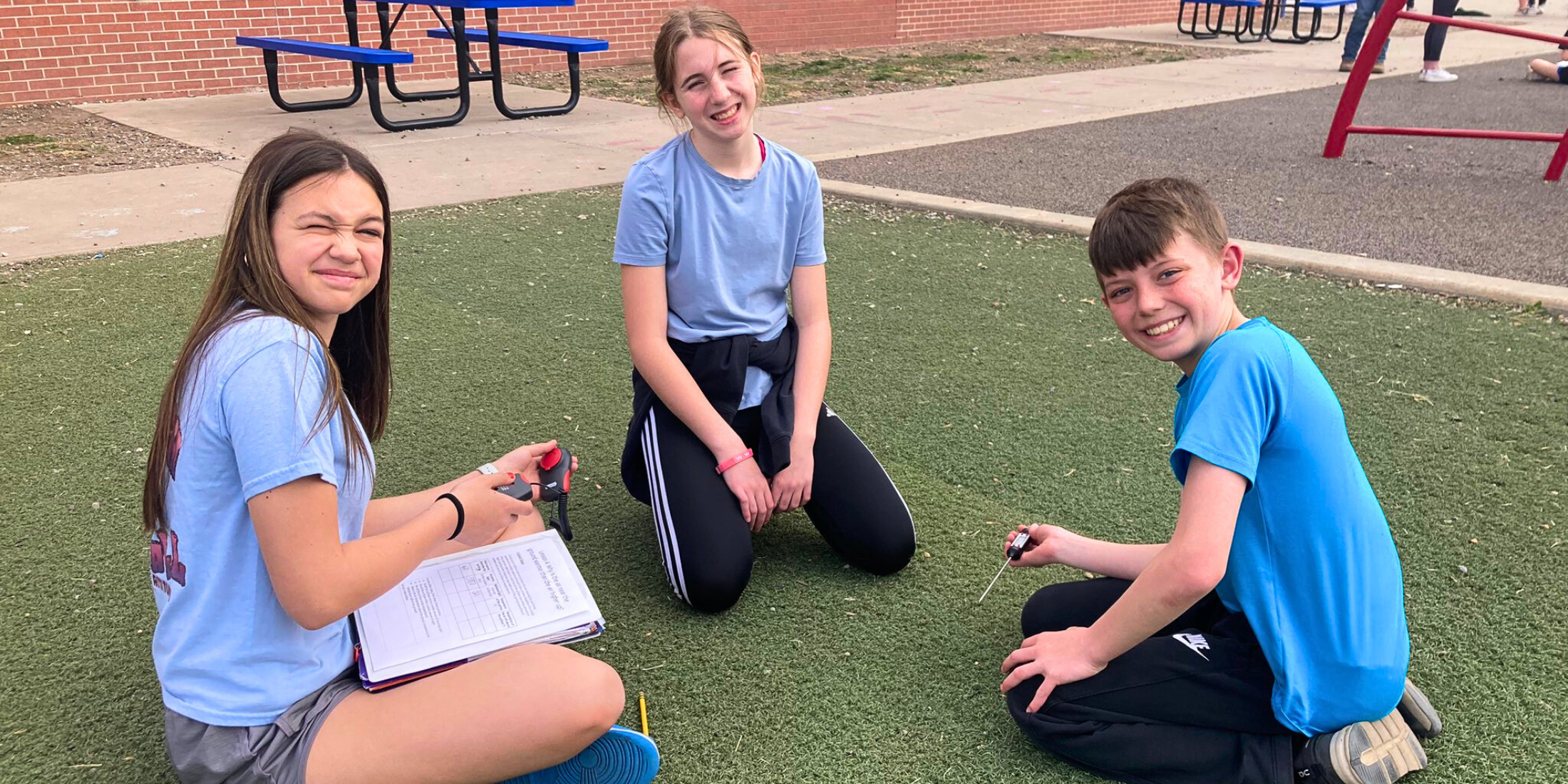
[6th grade students from Freeman Public Schools outside analyzing and documenting incoming & reflected light, as well as air temperature from OpenSciEd’s middle school curriculum. CREDIT: @BobFloth_FPS (X)]
“In addition to Nature journaling’s relevance for all ages, it’s also powerful, and possible for every teacher, every student, in every school, everywhere on the planet. It’s a simple and universal strategy for hyper local, rich, authentic, place-based connections. From working with teachers in both Kenya and Colorado, I’ve seen nature journaling be just as powerful in the informal settlements of Nairobi as the snow-capped mountains. It works anywhere. What adds to my excitement is that it’s also really good for teachers themselves!” – Becca K. (science teacher, Edutopia)
Integrating nature journaling into your classroom and curriculum is both simple and impactful. All students need is a notebook, a pencil or pen, and curiosity about the world around them. Encourage them to explore their neighborhoods, school grounds, or backyards, focusing on everyday phenomena they might usually overlook. John Muir Laws’ “Notice, Wonder, It Reminds Me Of” approach provides an excellent framework for guiding students from passive observation to active scientific exploration.
Make nature journaling a regular part of your curriculum to maximize the benefits. For example, nature journaling integrates seamlessly with Activate Learning’s OpenSciEd curricula. In the unit on Thermal Energy, students could use nature journals to record observations about heat transfer in their local environment. They might document how sunlight warms different surfaces, observe how animals regulate their body temperature, or track temperature changes in a local water body over time. These journal entries can serve as a springboard for class discussions, help students generate questions for the Driving Question Board for further investigation, and provide real-world context for the thermal energy concepts they’re learning in class.
Consistency and experimentation are key. Whether weekly or biweekly, consistent practice helps students develop their observation skills and deepen their scientific thinking. Foster engagement by facilitating group discussions where students share excerpts from their journals, create trivia based on their entries, or discuss their unique journaling processes. Remember, the goal is to encourage exploration and inquiry, not perfection. And of course, we want students to enjoy the process, which is a key part of their science learning journey!
For educators looking to learn more about nature journaling (whether for teaching it to students or for themselves), download John Muir Laws’ free e-book, How to Teach Nature Journaling, download Wild Wonder’s Quick Start Guide to Nature Journaling, and check out the free nature journaling resources (including free courses and webinars) available at Wild Wonder HERE.
Remember, when it comes to nature journaling, there are no limits—just endless opportunities to explore, observe, and connect. So, let’s all ‘go touch grass'! 🌿
* * * * * *

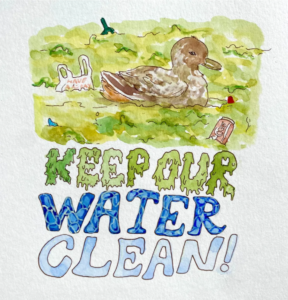
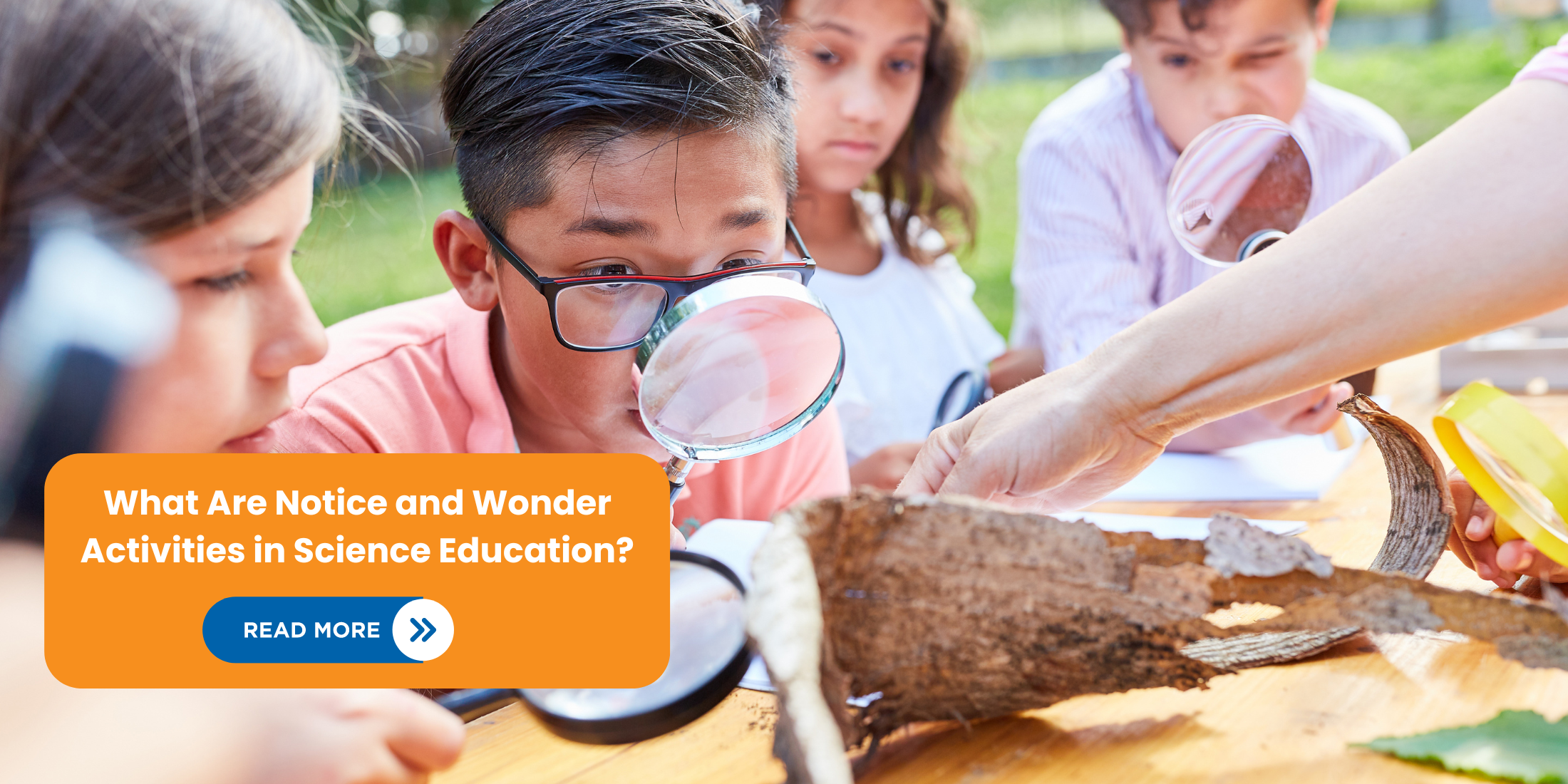

![OpenSciEd Universal Design for Learning Header Image (OSE students by nicolejbolduc) [PHOTO: 7th grade students analyzing data together in an exercise from OpenSciEd Unit 6.4. CREDIT: @nicolejbolduc/Twitter]](https://activatelearning.com/wp-content/uploads/bb-plugin/cache/OpenSciEd-Universal-Design-for-Learning-Header-Image-OSE-students-by-nicolejbolduc-1024x512-panorama-56d0d80e31176175c2818d16d199cd62-.png)
